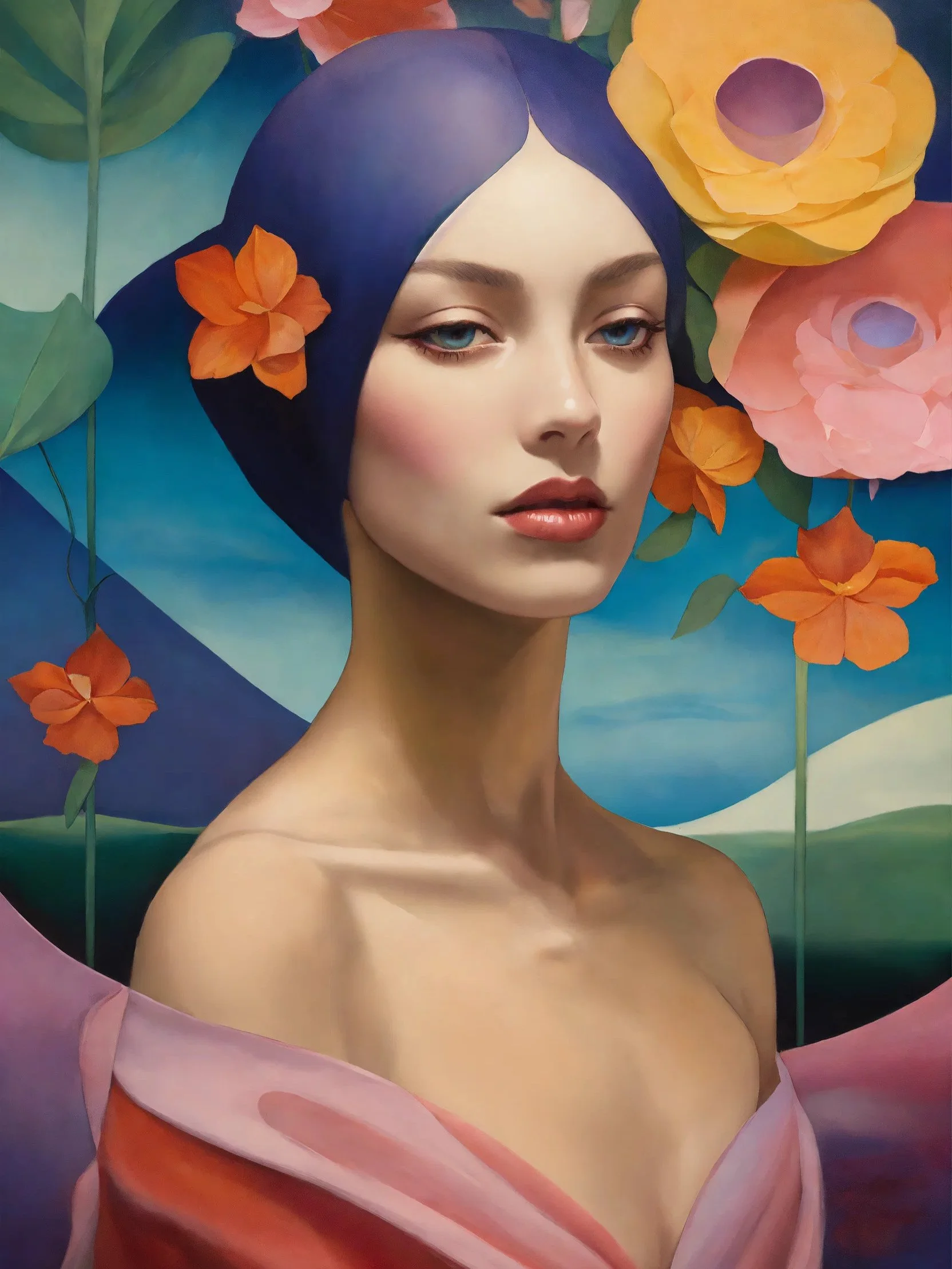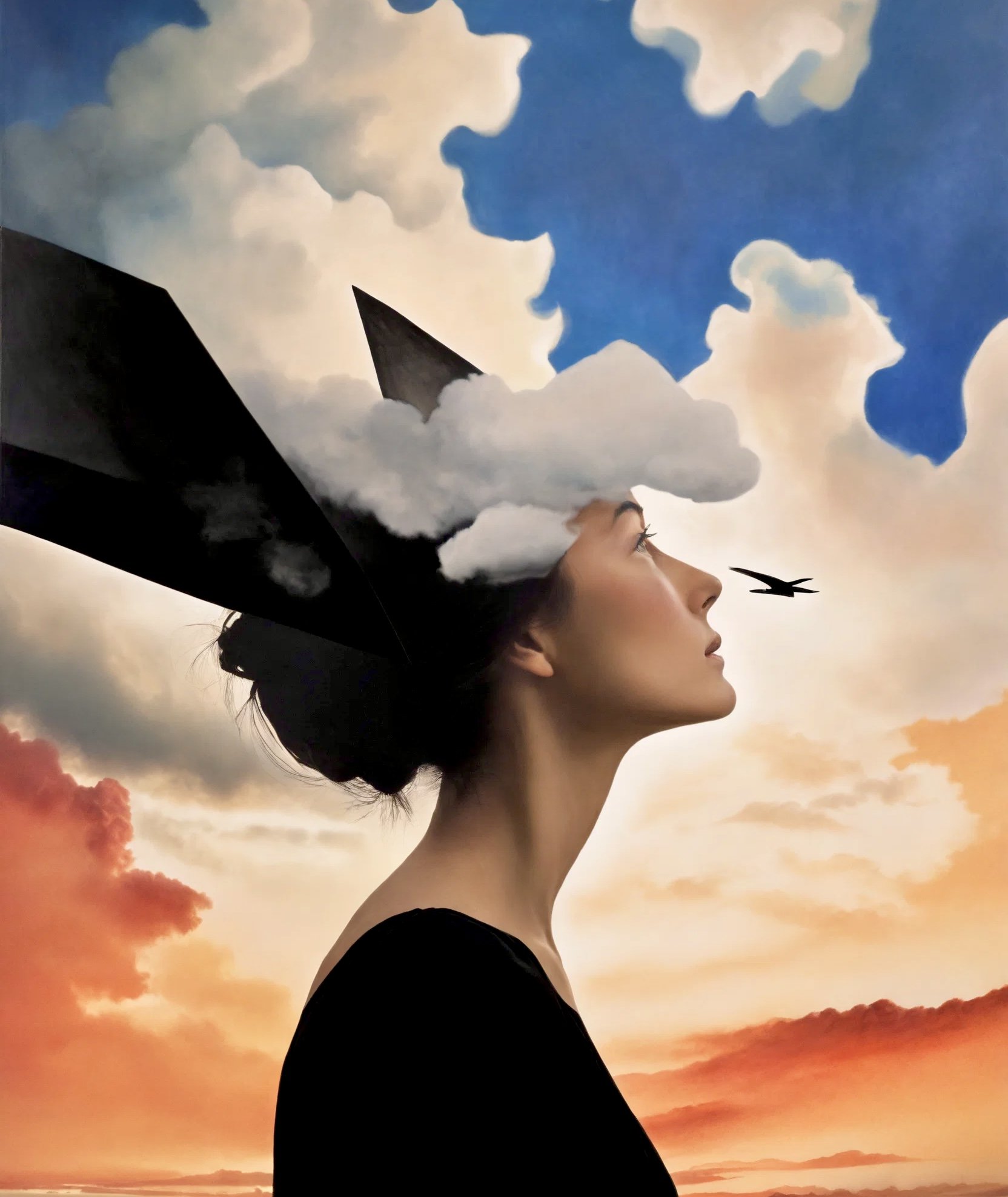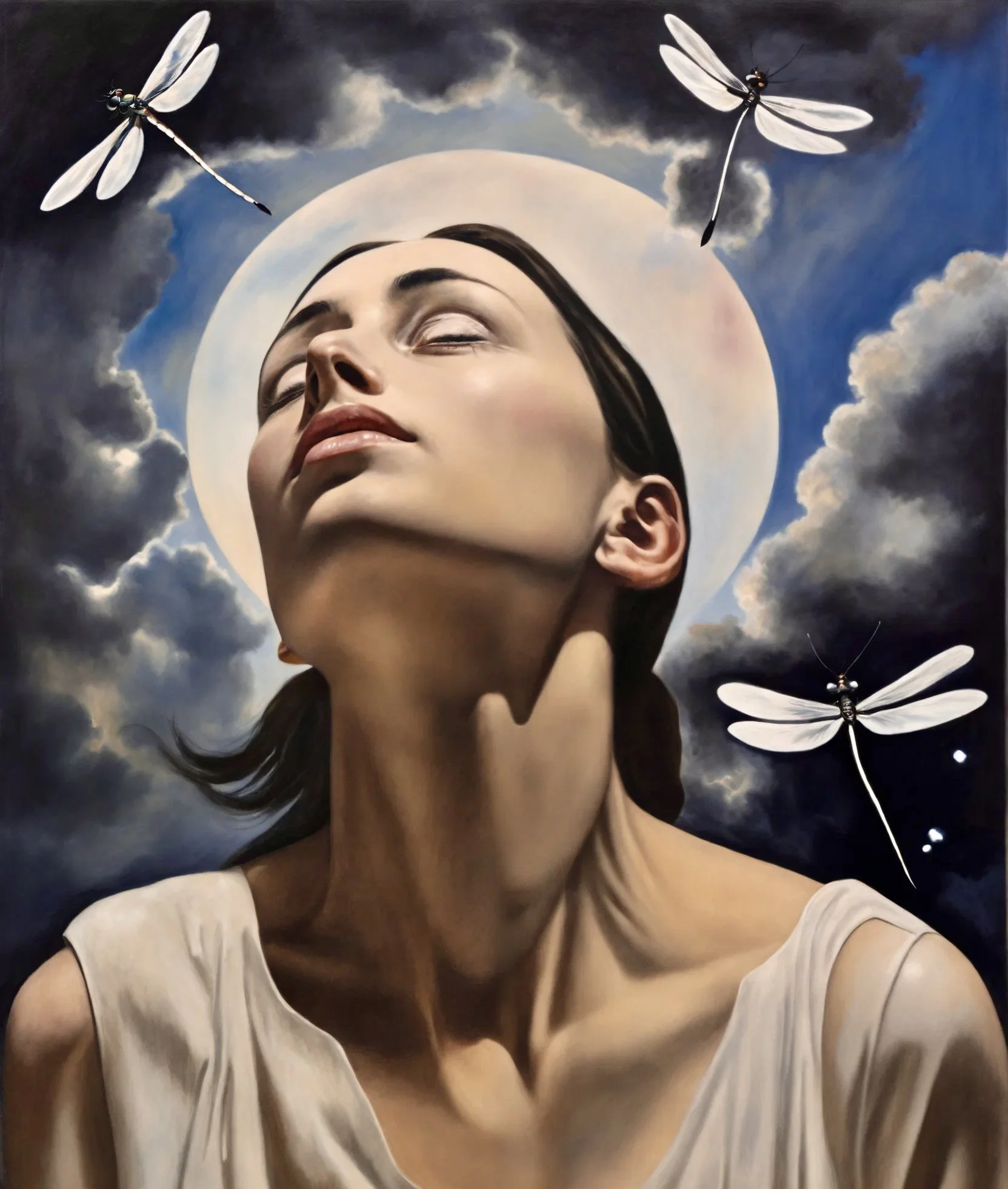Interview
Marlene Jorge
Marlene Jorge, an autodidact pop surrealist artist born in Santiago, Dominican Republic in 1974, has a unique approach to addressing unconsciousness. Jorge's style liberates unconsciousness from the common perspective, inviting spectators to break free from preconceptions and society's blueprints. She spent her youth between her native Dominican Republic and the USA, with her first drawing composition dating back to 1982, owned by her mother who recognized her artistry at the early age of five. Jorge's art challenges us to sympathize with our inner selves, untouched by preconceived social and cultural backgrounds, inviting us to embrace who we truly are without the life-giving preconceptions we experience constantly. Her elevated perspective provides a subtle yet unique composition, enticing us to understand and accept our true selves, love and health.
What is your background and how did you start your journey in the art world?
“I was born and raised in the Dominican Republic, where creativity was not just encouraged—it was survival. Art has always been a form of self-preservation for me, a space where I could process deep emotions and give voice to what I couldn’t say out loud. My background is a blend of personal exploration, emotional resilience, and academic curiosity. Although I didn’t follow a traditional path in the art world at first, I’ve always been an artist at heart. My journey began with sketchbooks that felt like diaries—filled with faces, fragmented thoughts, and surreal scenes reflecting my inner world. Over time, that impromptu expression evolved into a distinctive visual language. After years of working in creative and technical fields, I finally gave myself permission to fully pursue art as both a calling and a profession. Today, my work explores the subconscious, emotional landscapes, and the sacred in the everyday—often centered around the feminine experience. I see art not only as a personal healing practice, but as a universal bridge—connecting vulnerability, strength, and story.”
What does your work aim to say? Does it comment on any current social or political issues?
“My work is an invitation to look inward—to explore the unseen narratives we carry beneath the surface. It speaks to emotional survival, identity, femininity, and the raw complexity of being human. While my art is deeply personal, it often echoes universal themes: grief, resilience, silence, self-worth, and rebirth. Although I don’t intentionally set out to make overt political statements, my work inherently touches on social realities. The mere act of a woman reclaiming her voice and creating from her truth is, in itself, a quiet rebellion. By centering emotional intelligence and the subconscious female experience, I challenge cultural norms that dismiss sensitivity, vulnerability, or internal chaos as weakness. In a world that often demands performance and perfection, my art insists on honesty. It doesn’t offer easy answers—but it dares to feel, to question, and to exist unapologetically.”
Do you plan your work in advance, or is it improvisation?
“My work is born from improvisation. It begins as an emotional impulse, an unfiltered response to something I’ve felt, dreamed, or remembered. I rarely plan it in a structured way. Instead, I let the composition reveal itself as I go, almost like a visual stream of consciousness. For me, art is a dialogue between intuition and the subconscious. Sometimes, I don’t fully understand what a piece is trying to say until it’s nearly finished. That spontaneity allows the work to remain honest, raw, and emotionally charged. Even when I revisit recurring themes like womanhood, identity, or inner conflict, I approach each piece with openness. I trust the process to guide me, not control me. In that sense, my work feels more like discovery than execution.”
“My creative process is intuitive and emotionally driven. I begin with a feeling often unresolved or unspoken and let it guide me visually.”
Are there any art world trends you are following?
“I stay aware of trends, but I don’t follow them in the traditional sense. I believe art should come from a deeply personal place, not from external noise. That said, I am drawn to the growing shift toward emotional honesty, feminine narratives, and the resurgence of surrealism and symbolism in contemporary art. These movements echo what I’ve always created instinctively. I’m also inspired by the way many artists today are reclaiming their stories, blending digital and traditional mediums, and using their work as a form of healing, activism, or cultural memory. There’s a quiet revolution happening one that values depth over perfection, process over performance and , that resonates deeply with me.”
What process, materials and techniques do you use to create your artwork?
“My creative process is intuitive and emotionally driven. I begin with a feeling often unresolved or unspoken and let it guide me visually. There’s rarely a sketch or plan. I work in layers, allowing the image to unfold, shift, and surprise me. I primarily use acrylics, ink, and mixed media on canvas or wood panels, blending brushwork with fine-line detailing. I also incorporate unconventional tools—like palette knives, paper, charcoal, or fabric when I feel the need to break structure or add texture and tension. Some of my works include collage or handwritten fragments, almost like entries from a visual diary. The technique is less about precision and more about presence. I let accidents happen. I let emotions take the lead. It’s messy, raw, and honest, just like the stories I aim to tell.”
What does your art mean to you?
“My art is my language, my refuge, and my rebellion. It’s where I go to tell the truth when words fail or when the world becomes too loud. It’s a mirror to my inner life and a bridge to others who feel deeply but don’t always know how to express it. Creating is not just something I do it’s how I survive, how I heal, and how I connect. Each piece holds fragments of me: moments I’ve endured, emotions I’ve untangled, and parts of myself I’ve reclaimed. My art isn’t about perfection it’s about honesty. It’s about making space for contradictions, silence, chaos, and beauty to coexist. To me, art is the most sacred act of remembering who you are before the world told you who to be.”
What’s your favourite artwork and why?
“That’s a difficult question, because every piece holds a different part of me. But if I had to choose, there’s one artwork that stands out—not because it’s the most technically refined, but because it was born during a moment of complete emotional unraveling. I painted it in silence, with no plan, just raw feeling. It marked the first time I allowed myself to create without apology, without trying to be understood. It’s my favorite not for how it looks, but for what it gave me: permission. Permission to feel deeply, to express freely, and to trust my own voice. That piece was the beginning of everything for me, it opened the door to my current style and to the healing nature of my creative process. It reminds me that art doesn’t need to impress. it needs to tell the truth.”
Have you had any noteworthy exhibitions you'd like to share?
“I have had numerous exhibitions including: Persona Art Honours Award, Contemporary Art Station, 2024; Global Masterpice Award, Contemporary Art Curator, 2024; Digital Gallery of Contemporary Artists, 2024; Square Station Underground Art Exhibit, Leicester, Cranbourn St, London, 2024; The Holy Art, Barcelona Immersive Experience, 2024; including others.”
Website: artistmarlenejorge.com
Instagram: @marlenejorgeartist










